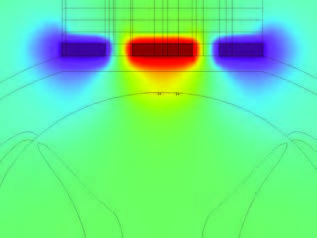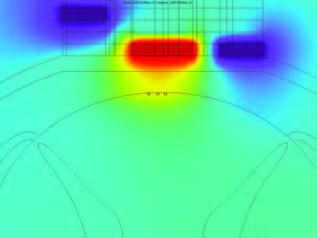
Spinal cord stimulation (SCS) is a treatment for chronic back pain that has been around for over 40 years. It involves implanting electrodes that apply electric potentials directly to the spine, interfering with the human pain signaling circuitry. The body attempts to send pain signals to the brain, but the electrodes act as a barrier preventing the signals from reaching the brain. Although an overall successful method for treating back pain, researchers have been improving on the design since the inception of SCS.
SCS has been effective for many years, but generally, the electrodes need reprogramming. Scarring occurs in the surrounding tissue, and while helpful in keeping the electrodes in place, it changes the electrical characteristics of the system. Usually this required the system to be modified using a trial-and-error method. Jeffrey Arle, Jay Shils, and Kris Carlson with the Neuromodulation Group at Lahey Clinic in Burlington, MA, researched this phenomenon using multiphysics simulation.
Having already created an incredibly detailed, one-of-a-kind model in SolidWorks® they turned to COMSOL Multiphysics. Using LiveLink™ for SolidWorks®, they were able to make changes to the geometries in SolidWorks® and sync those changes with COMSOL, all while maintaining the physical and material properties of the model. This was especially important for their work, as they set up both materials and physics parameters. By adding these changes to the model, you can see the distortion of the electrical fields caused by the scar formation.

|

|
The scarring reduces the electric field symmetry (shown above to the right), which is necessary for proper SCS treatment. More modeling and post-processing can be done to adjust the electrodes to output the desired electric potential. This procedure has been successful in immediately removing pain when the programming is on target.
Further Reading
- For more information, and specifics on how they achieved these results, go to page 27 in COMSOL News.
- What is the Nature of Pain?
SolidWorks is a registered trademark of Dassault Systèmes SolidWorks Corp. LiveLink™ for SolidWorks® is not affiliated with, endorsed by, sponsored by, or supported by Dassault Systèmes SolidWorks Corp.




Comments (0)